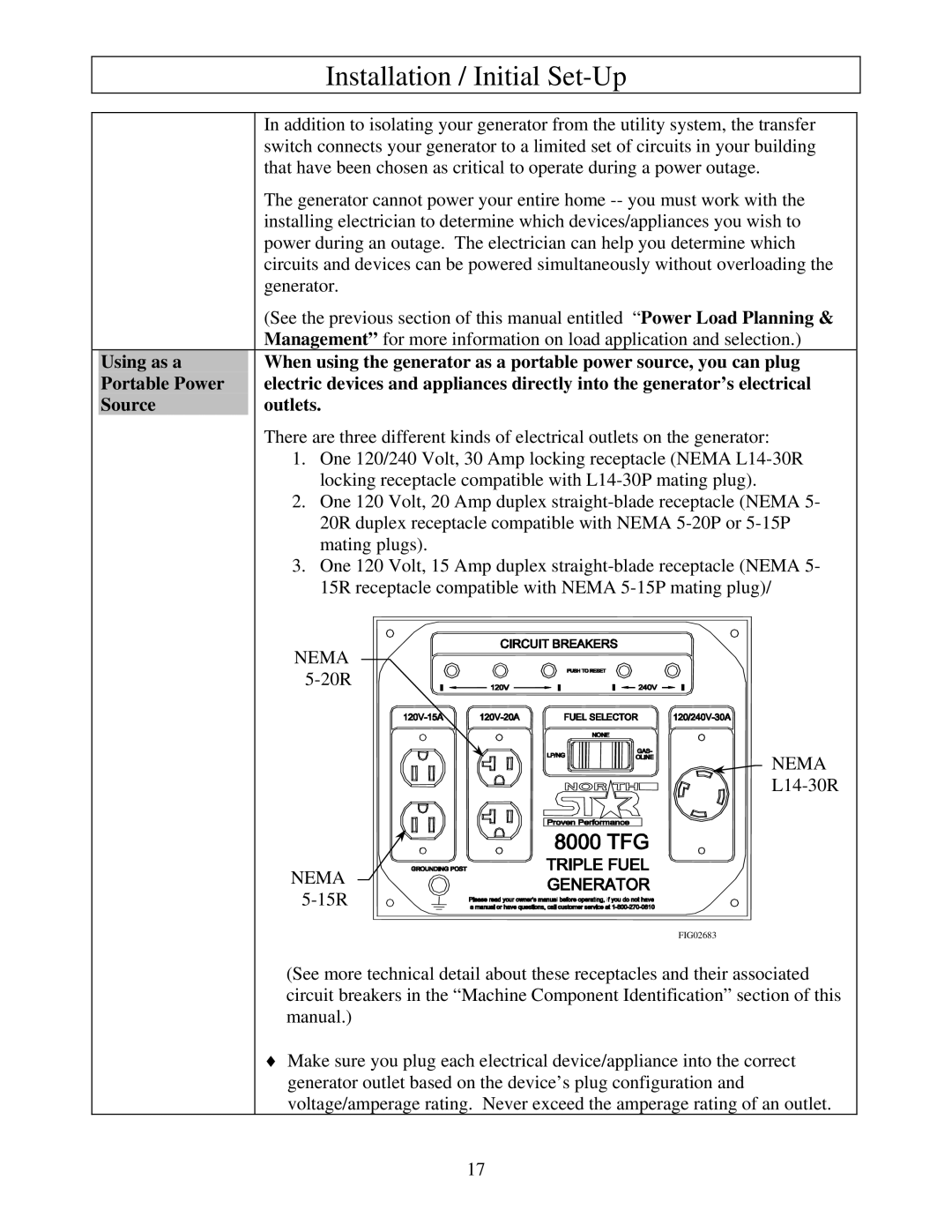
Installation / Initial Set-Up
| In addition to isolating your generator from the utility system, the transfer |
| switch connects your generator to a limited set of circuits in your building |
| that have been chosen as critical to operate during a power outage. |
| The generator cannot power your entire home |
| installing electrician to determine which devices/appliances you wish to |
| power during an outage. The electrician can help you determine which |
| circuits and devices can be powered simultaneously without overloading the |
| generator. |
| (See the previous section of this manual entitled “Power Load Planning & |
| Management” for more information on load application and selection.) |
Using as a | When using the generator as a portable power source, you can plug |
Portable Power | electric devices and appliances directly into the generator’s electrical |
Source | outlets. |
| There are three different kinds of electrical outlets on the generator: |
| 1. One 120/240 Volt, 30 Amp locking receptacle (NEMA |
| locking receptacle compatible with |
| 2. One 120 Volt, 20 Amp duplex |
| 20R duplex receptacle compatible with NEMA |
| mating plugs). |
| 3. One 120 Volt, 15 Amp duplex |
| 15R receptacle compatible with NEMA |
| NEMA |
|
![]() NEMA
NEMA
NEMA ![]()
![]()
![]()
![]()
![]()
![]()
![]()
![]()
![]()
![]()
![]()
![]()
![]()
![]()
![]()
![]()
![]()
![]()
![]()
![]()
![]()
![]()
![]()
![]()
![]()
![]()
![]()
![]()
![]()
![]()
![]()
![]()
![]()
![]()
![]()
![]()
![]()
![]()
![]()
![]()
![]()
![]()
![]()
![]()
![]()
![]()
![]()
![]()
![]()
![]()
![]()
![]()
![]()
![]()
![]()
![]()
![]()
![]()
![]()
![]()
![]()
![]()
![]()
FIG02683
(See more technical detail about these receptacles and their associated circuit breakers in the “Machine Component Identification” section of this manual.)
♦Make sure you plug each electrical device/appliance into the correct generator outlet based on the device’s plug configuration and voltage/amperage rating. Never exceed the amperage rating of an outlet.
17
